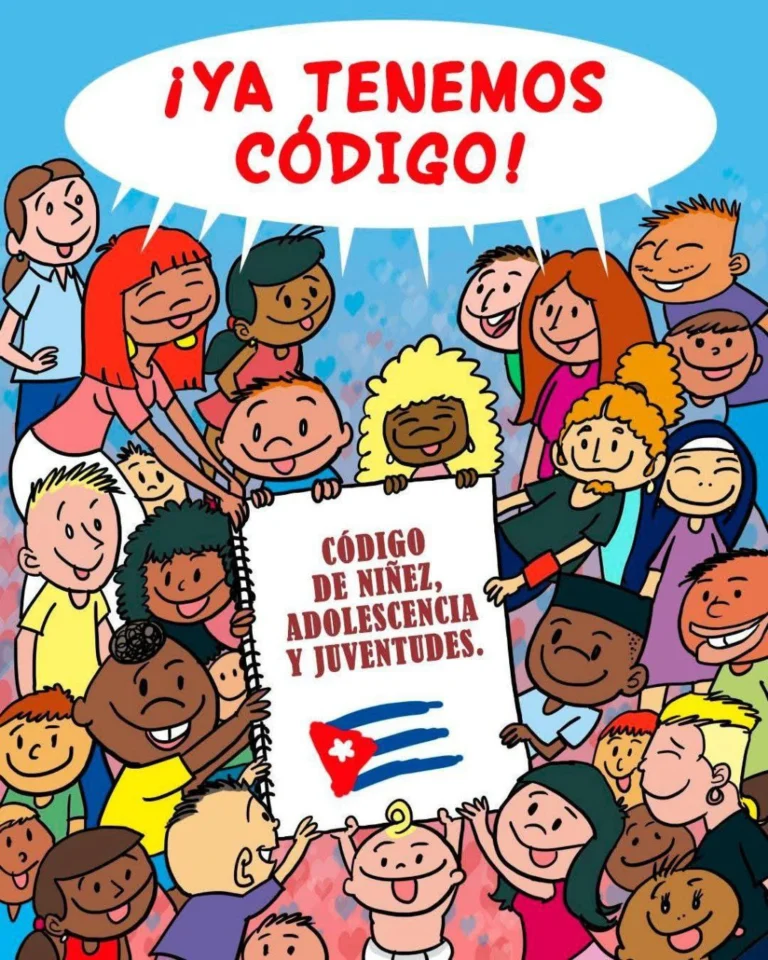Heartwarming Milestone: Cuba Unveils New Youth and Childhood Code With 124 Articles for Empower Next Generation

Cuba new Youth and Childhood Code ilustration
July 19, 2025 Hour: 11:54 am
Cuba approves a new Youth and Childhood Code with 124 articles to protect minors’ rights, promote participation, and align with international standards on child development.
Related: Cuba’s National Assembly Approves Constitutional Reform to Remove Presidential Age Limit
Geopolitical and Social Context of the Cuba New Youth and Childhood Code
Cuba has taken a major step toward modernizing its legal framework for children and youth with the approval of the Cuba new Youth and Childhood Code, a comprehensive law comprising 124 articles that redefine the rights and protections for minors across the island. The new legislation replaces the 1978 Youth and Childhood Code, updating it to reflect contemporary social realities and align with international standards, particularly the UN Convention on the Rights of the Child and the Sustainable Development Goals (SDGs).
The law was passed during the Third Session of the Fifth Ordinary Session of the National Assembly of People’s Power, with President Miguel Díaz-Canel Bermúdez and other high-ranking officials present. It represents a multisectoral, participatory legal reform aimed at ensuring the full development of children, adolescents, and young people in a rapidly changing world.
🔗 Cuban National Assembly – Official Statement
Cuba Approves 124-Article Youth and Childhood Code
On Saturday, July 19, 2025, the National Assembly of People’s Power approved the new Youth and Childhood Code, a landmark legal reform that replaces the decades-old Law 16. The updated code, now composed of two volumes and 124 articles, expands the legal framework for the protection and participation of minors in Cuban society.
President Miguel Díaz-Canel Bermúdez and Arelys Santana Bello, head of the Permanent Commission on Youth, Childhood, and Women’s Equality, led the approval ceremony. The law marks a shift from the previous focus on ideological and professional formation to a rights-based, inclusive, and holistic approach.
“Nothing we do would make sense without our greatest treasure: the new generations. Our children and grandchildren are the reason we fight for a better world,” Díaz-Canel said during the session.
🔗 Cuban Ministry of Education – Legal Reform Summary
A Legal Framework for Protection, Inclusion, and Participation
The Cuba new Youth and Childhood Code introduces a comprehensive protection system that integrates institutions, policies, and procedures to ensure the well-being, development, and active participation of children, adolescents, and youth in Cuban society.
The law places special emphasis on early childhood, gender equality, and access to education, health, and work opportunities. It also addresses issues such as delinquent behavior, age-based power dynamics, and the inclusion of young people in political and social decision-making.
Naima Ariatne Trujillo Barreto, Cuba’s Minister of Education, described the code as a cross-sectoral and transversal legal instrument, highlighting the shared responsibility of families, communities, and institutions in safeguarding the development of minors.
Aligning With International Standards and Human Rights
The new code reaffirms Cuba’s commitment to the Convention on the Rights of the Child, as well as global development goals related to education, health, and gender equality. It recognizes minors not only as beneficiaries of protection but as active agents of their own development, with the right to participate in decisions that affect them, in accordance with their psychological maturity and progressive autonomy.
The law also promotes the elimination of stereotypes and discrimination, ensuring that all children and youth — regardless of background — are treated with dignity and respect. It emphasizes non-discrimination, access to justice, and the protection of vulnerable groups, including those in foster care, with disabilities, or facing economic hardship.
Community and Institutional Responsibility for Child Development
The Cuba new Youth and Childhood Code establishes a shared responsibility model, where families, schools, and state institutions collaborate to ensure the full development of minors. It introduces legal mechanisms for early intervention, inclusive education, and protection against violence, while also promoting the right to work for adolescents under strict regulations.
The code also includes legal safeguards for digital safety, reflecting the evolving nature of childhood and youth experiences in the 21st century. “This is a legal instrument that responds to today’s realities,” said Trujillo Barreto, noting the importance of a multisectoral and community-driven approach.
Participatory Process Behind the New Code
The formulation of the new code involved broad consultation with civil society, including academics, educators, social organizations, and youth groups. This participatory process ensured that the law would reflect the real-life experiences and needs of Cuban children and young people.
The updated framework also integrates lessons from previous legal instruments and aligns with constitutional reforms passed in recent years, reinforcing the state’s commitment to human rights, social inclusion, and youth empowerment.
“This law is not just a legal update — it’s a social contract with the future of our country,” said one legal expert involved in the drafting process.
Conclusion: A Legal and Social Milestone for Cuban Youth
The Cuba new Youth and Childhood Code represents a significant milestone in the evolution of legal protections for minors on the island. By replacing an outdated framework with a modern, rights-based legal structure, the government has demonstrated its commitment to ensuring a safer, more inclusive, and participatory environment for the next generation.
As Cuba continues to update its legal system, the new code stands as a symbol of progress and social responsibility, reinforcing the idea that the future of the nation lies in the hands of its youth.
Author: JMVR
Source: Granma

